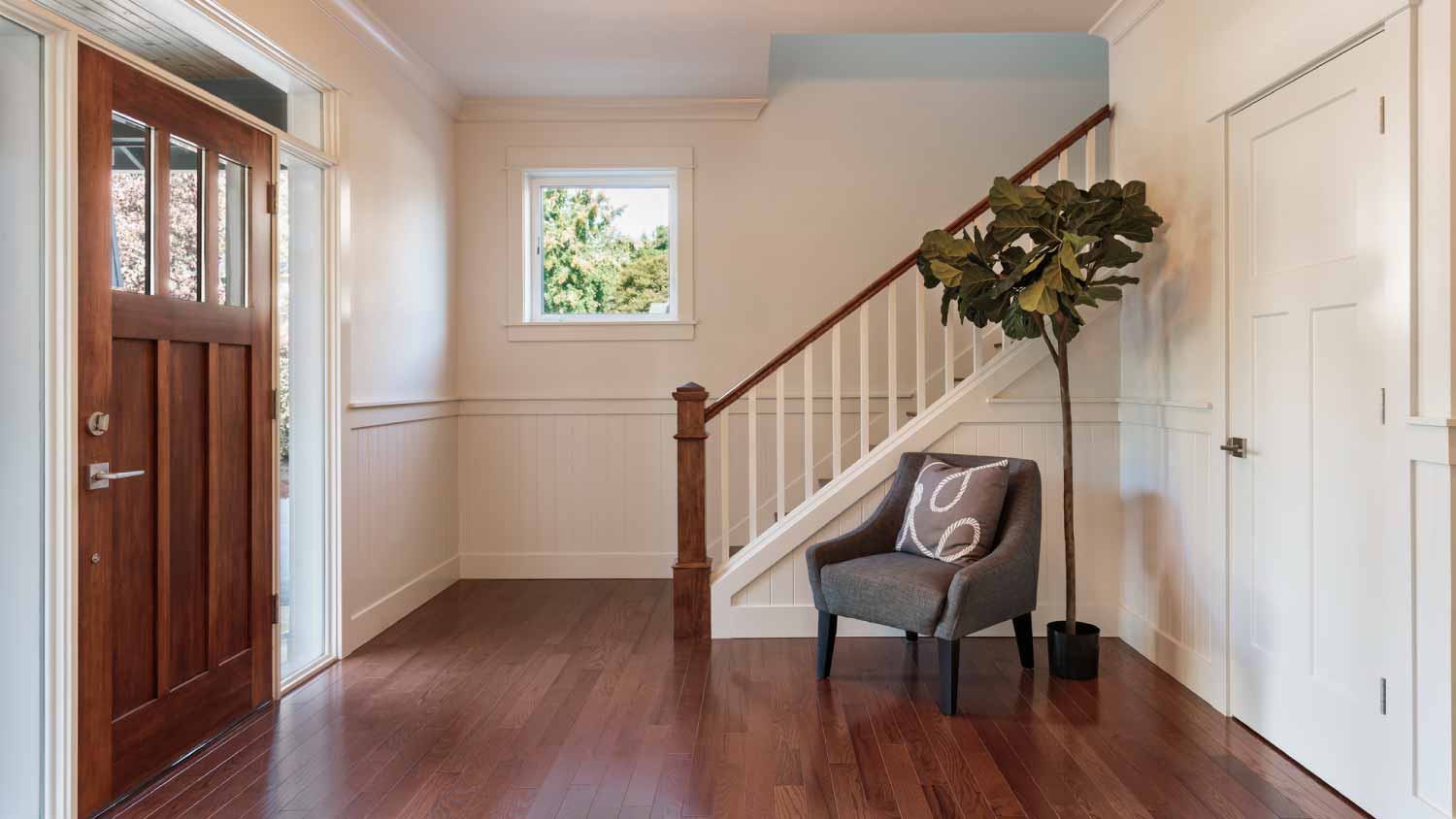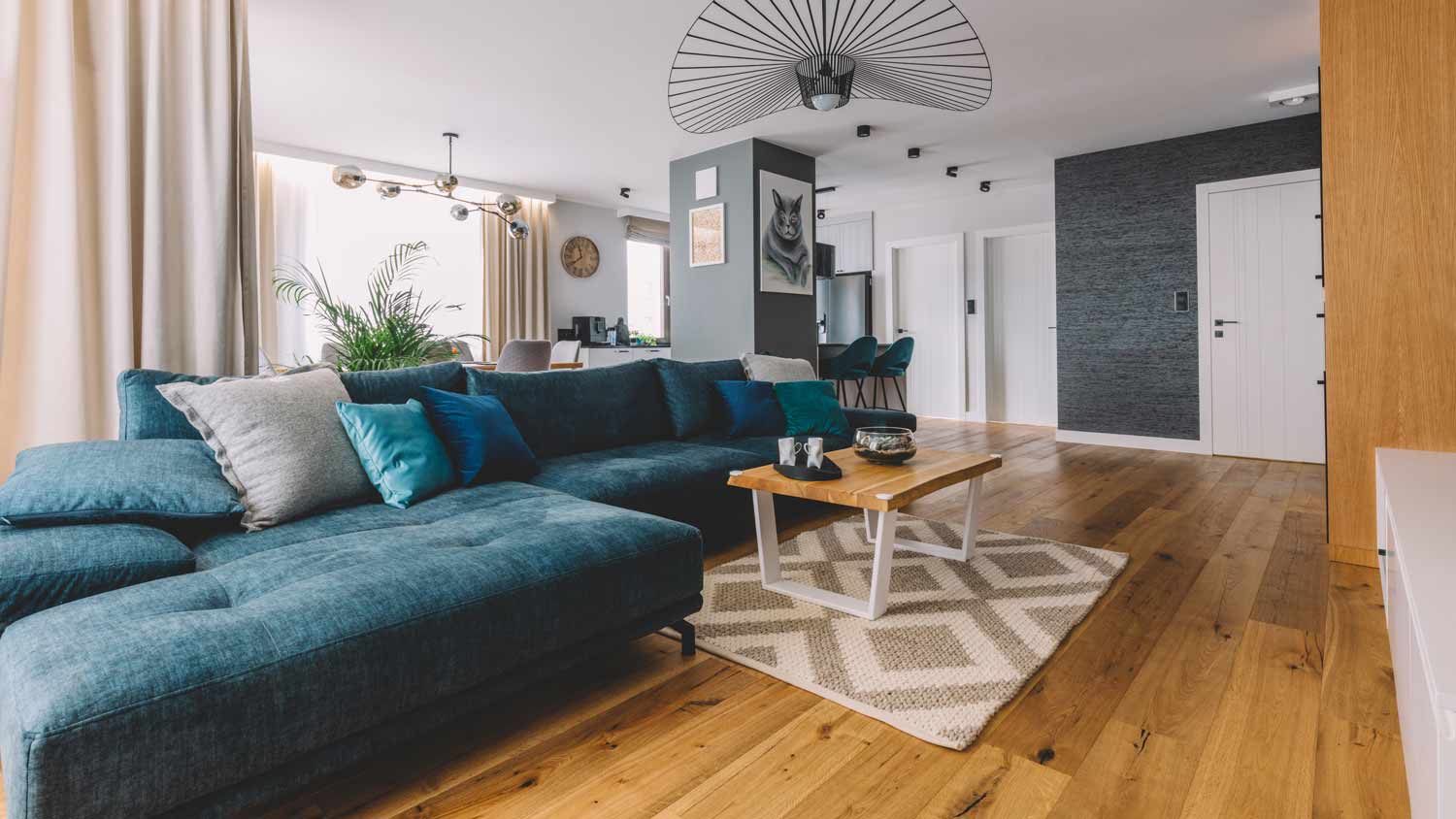What Is Travertine Tile? Pros, Cons, and How It’s Used
Discover whether travertine is the right choice for your home update


Travertine tile is made from limestone formed in mineral-dense springs.
The tile is durable and comes in various finishes.
Travertine comes in more limited hues than synthetic options.
Travertine tile has been used as a building and decorative material for centuries. Made from natural limestone, travertine comes in earthy colors and unique textures, making it a popular choice for homeowners looking to enhance their homes with organic warmth. Use this guide to learn all about travertine tile, including the pros, cons, uses, and how it’s made.
What Is Travertine Tile?
Travertine tile is made from a type of limestone formed by mineral deposits found in natural springs, particularly hot springs. The formation process begins when mineral-dense water dissolves and becomes saturated with calcium carbonate, or calcite. Changes in temperature or pressure cause the calcium carbonate to precipitate out of the liquid, releasing carbon dioxide as gas. The calcium carbonate then recrystallizes, ultimately forming travertine, which has small holes due to imprints from the carbon dioxide bubbles. This process typically occurs in hot springs due to their fluctuating temperatures and carbon dioxide levels.
The resulting material is a porous limestone, the holes of which are typically filled to create a smoother, more durable surface that’s suitable for tiling. Travertine has a natural, earthy appearance that features a wide range of colors, like white, tan, cream, and rust. It often features unique patterns, like swirls, dots, and waves, which appear during its formation and give it a compelling look.
Types of Travertine Tile
There are several types of travertine tile, each offering a different look and feel to suit various design preferences.
Honed Travertine Tile: This tile features a matte finish and a smooth and flat texture, providing a clean, modern appearance. Its non-reflective surface makes it suitable for a wide variety of interior styles, but it works particularly well for contemporary aesthetics and is commonly used on floors and walls.
Polished Travertine Tile: Featuring a shiny, glossy finish achieved by polishing the stone, polished travertine tile has an elegant feel that’s commonly used in sleek, upscale homes. The polishing process enhances the stone’s natural patterns, making for striking countertops and accent walls. However, it’s slippery, so it’s not ideal for bathroom floors.
Tumbled Travertine Tile: This travertine type has a rustic appearance with rounded edges and a textured surface. To achieve the finish, the tiles are placed in a tumbler with small stones that gently wear down the edges and surfaces to give the tile a weathered, antique look. Its appearance is especially suitable for traditional and rustic homes, as well as in outdoor spaces, like patios and garden paths.
Brushed Travertine Tile: Brushed travertine tile is treated with a wire brush that gives it a soft, lightly textured finish. It’s a versatile finish that works well in both casual and formal spaces, as well as in a variety of rooms, like living rooms, bathrooms, and kitchens.
Pros of Travertine Tile
Travertine tile offers a wide range of aesthetic and functional benefits, so it’s no surprise that it’s a popular choice for homeowners and designers alike.
Aesthetic Appeal
Travertine tile offers a natural and timeless look that can add sophistication and visual interest to a space. The tile’s unique veining and color variations mean that each tile is a little different than the next, coming together to beautifully enhance the aesthetic of a space with unique charm.
Durability
Travertine itself is extremely durable, often lasting for many centuries. When made into tile, it can lose some of its durability, but it still has a much longer life span than many other surface materials, often lasting for 100 years or more with proper maintenance.
Versatility
Travertine tile comes in a handful of different hues to suit various color schemes. It’s also quite versatile in terms of texture. You can choose smooth, sleek finishes for more modern or contemporary homes, or opt for a more textured finish to enhance a rustic or outdoor look.
Eco-Friendly
Travertine tile is made from natural stone that doesn’t require extensive processing or the use of harsh chemicals during production. This makes it an eco-friendly choice compared to synthetic materials. It’s also long-lasting, so it reduces the need for frequent (and costly!) repairs.
Cool to the Touch
Travertine's natural thermal properties make it cool to the touch. This feature makes it a great fit for hot climates and outdoor applications on patios, pool decks, and pathways, providing comfortable surfaces to walk on during hot weather.
Increases a Home’s Value
Updating a home with travertine tile often increases its resale value as the tile is highly coveted for its durability, longevity, and appearance.
Cons of Travertine Tile
Although its list of pros is longer than the cons, travertine tile does have some drawbacks that are worth considering before committing to the material.
High Maintenance
Since travertine is a porous material, it can easily absorb liquids and become stained with permanent marks if not promptly cleaned. Sealing travertine tile every 2 to 3 years after installation can help mitigate this issue, but it’s still important to clean stains quickly to prevent permanent stains. You should also use a non-acidic cleaner since acidic substances, like vinegar and some other cleaning agents, can cause etching on the surface.
Expensive
Travertine tiles cost more than many other tile types, ranging anywhere from $600 to $3,200 for a 100-square-foot space. However, most homeowners will pay around $2,000 for 100 square feet of travertine. High-quality travertine with custom finishes or rare color variations can cost even more.
Travertine is also heavier than many other tile types, which can further increase the tile’s installation costs. But if you have some DIY experience under your belt, you can install travertine yourself with the right tiling tools.
Limited Color Options
Since travertine is formed from natural materials, its colors are limited to those found in nature—it typically comes in white, tan, cream, and rust, though it’s possible to find green and pink hues. This means it’s not ideal for homeowners seeking a very specific or bold color.
Common Uses for Travertine Tile
Travertine is a versatile tile that has many applications, both indoors and outdoors. Textured travertine, like tumbled travertine tile, tends to work best outdoors, while smoother finishes, like polished travertine, are more commonly used inside on surfaces like walls and countertops. Common applications include:
Countertops
Backsplashes
Fireplace accents
Walkways
Interior floors
Patios
Pool Decks
Interior and exterior Walls
Driveways
Bathtub surrounds
Shower walls

.jpg?impolicy=leadImage)



- What Is the Best Tile for a Kitchen Floor?
- Ceramic Tile Flooring Pros and Cons: Could This Be the Tile of Your Dreams?
- The Top 7 Types of Stone Countertops for Your Kitchen
- The Pros and Cons of Tile Roofs
- How to Cut Glass Tile Safely and Without Shatter
- Pros and Cons of Peel and Stick Tile
- 8 Tips for a Beautiful Tile-to-Wood Floor Transition
- 7 Tips to Choose Tile Trim and Edging for Your Home
- How to Cut Tile Step by Step
- How to Dispose of Tile Properly










